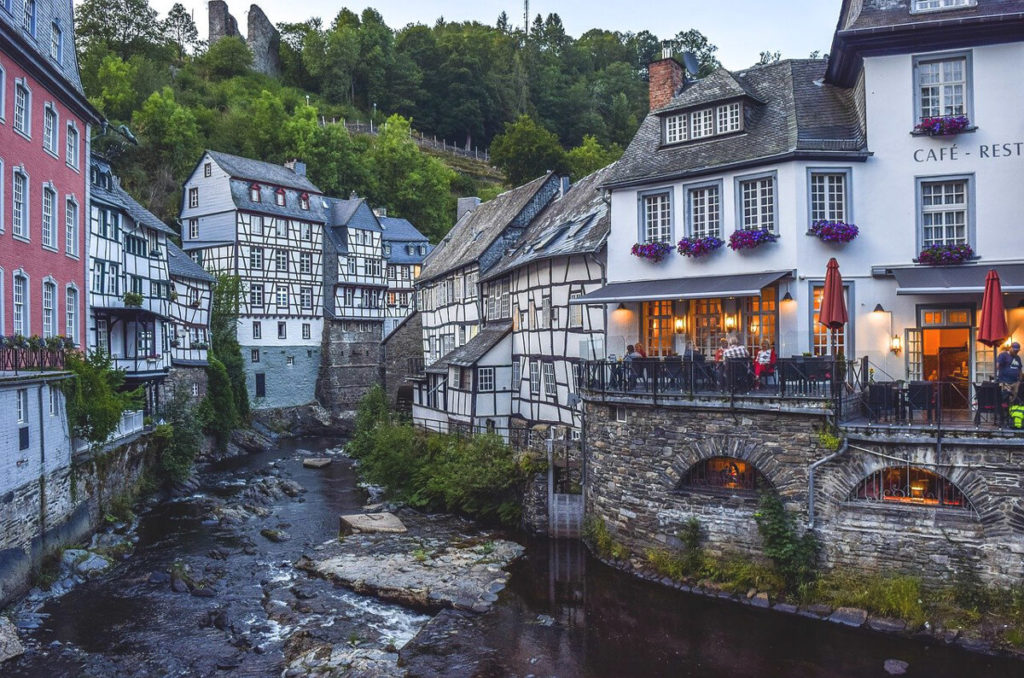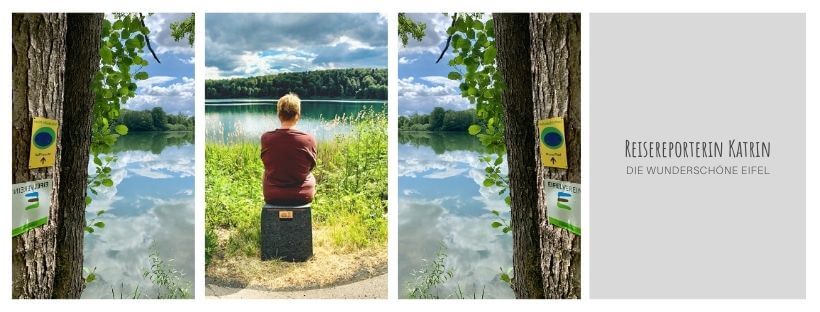We’re thrilled to be sharing another wonderful travel report with you today. This time, it’s all about geysers, volcanic craters, and lava bombs. Perhaps you still remember Katrin’s wonderful report about the Lofoten Islands? Today, Katrin takes us to the beautiful Eifel and shares 5 really good reasons why you should definitely visit this region. Especially this year (and probably next year too), traveling in Germany has become more important than ever. Travelling to nearby and faraway countries is currently out of the question for many people, and therefore we would like to use this report today to introduce you to other wonderful corners of our beautiful home country, Germany. Have fun browsing!
These reports might also interest you:
- Journey through the Atacama Desert
- The most beautiful highlights in Tasmania
- My trip to the Maldives
- Round trip through North Macedonia
- Tonga in South Pacific
- My trip through Mexico
- Cool tour of Cornwall and Devon
- My tour through Myanmar
- On your own through Botswana
- The Indonesian Moluccas
- Top Highlights on Nusa Penida
- Cappadocia in Turkey
- These reports might also interest you:
- Geysers, volcanic craters & lava bombs
- Welcome to the Eifel
- 5 reasons to visit the Eifel
- 1. You are looking for peace and quiet
- 2. You are interested in geotourism
- 3. You want to be a damsel or knight
- 4. You want to lace up your hiking boots
- 5. You like cute places and the special
Geysers, volcanic craters & Lava Bombs
It’s only a few meters from the parking lot until we stand in front of a 120-ton, approximately 6-meter-high lava boulder and discreetly look around to see if there might be further danger nearby. After all, we’re standing in an area with approximately 240 volcanoes that lie in a tectonic collapse zone and, according to geoscientists, are currently more dormant than actually extinct. A study from June 2020 shows that an active magma body lies at the boundary of the Earth’s mantle.
Discreetly place my hand on the ground, but phew… everything’s cold. The idea that this mighty boulder was ejected from a volcano as a missile is truly creepy. Unfortunately, the information board disillusions us. No flying object. The lava bomb achieved its considerable size by rolling around in the crater, picking up more and more lava, like a snowball rolling through the snow.
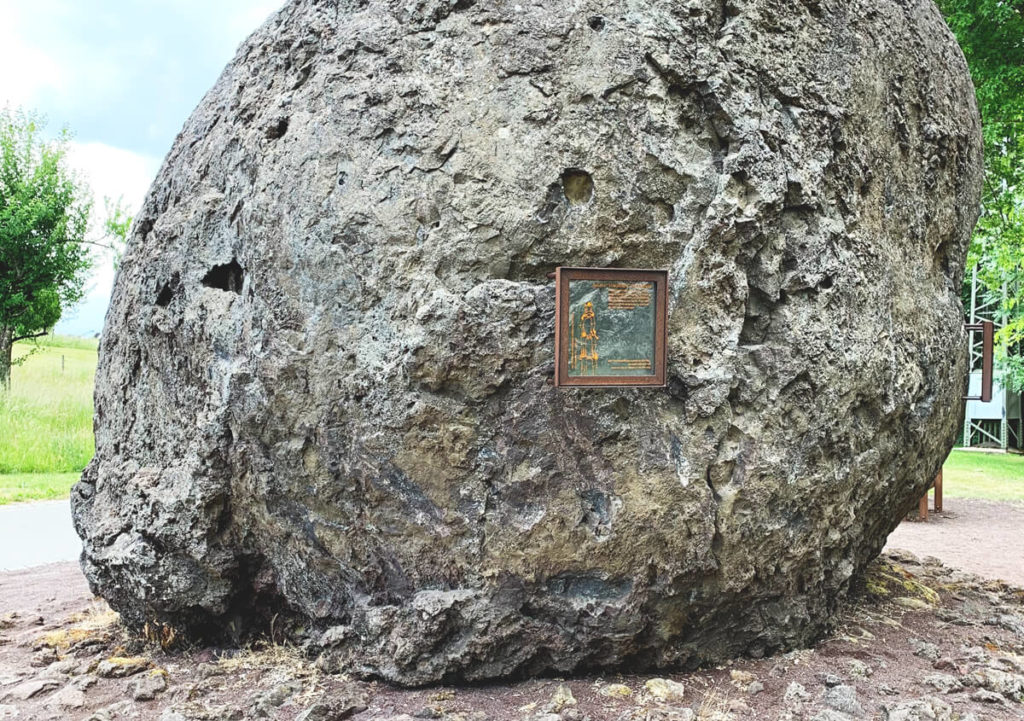
Just 45 minutes’ drive away, you can board a boat and be taken to another spectacular natural spectacle: a geyser that spews out a 60-meter-high fountain every two hours! Magnificent! Oh, did I mention where we are? That’s right, in Germany. Oops – lava bombs and geysers in Germany? You read that right. You can find both in a low German mountain range. Regarding the geyser, it must be said that this is a cold water geyser – the highest of its kind in the world!
In contrast to the hot water geysers in Iceland, New Zealand, or even the USA, whose operating principle is based on the conversion of water to steam, the driving force behind the cold water geyser in the Middle Rhine Valley is carbon dioxide gas. But I digress. I was just about to tell you where exactly we are, especially because I’ll also be telling you about volcanic craters, solidified magma, and cinder cones below.
Welcome to the Eifel
A 5,300 km², spectacular region in western Germany (Rhineland-Palatinate and North Rhine-Westphalia), which has a completely undeserved reputation as a paradise for leisurely hikers with an average age of over 70. The Eifel has more to offer! Above all, it has nature. But it also has geology, picturesque villages, and, of course, Eifel crime novels. Roughly located in a geographical triangle between Koblenz, Aachen, and Trier, it is also quick and easy to reach for many nature-loving city dwellers.
5 Reasons to Visit the Eifel
When Bolle and Marco asked me if I’d like to write something about my love for the Eifel, the answer was clear. Of course! But how can I convey my enthusiasm for this part of Germany to you? Here are my 5 reasons why you should definitely visit the Eifel:
1. You’re looking for peace and quiet
The Eifel slows down. It offers you a break from everyday life and invites you to walk through forests and meadows, past rivers, and through valleys, usually barely meeting another person. Just the drive along the gently rolling country roads with magnificent views of hills and forests, maars and rivers is a true joy.
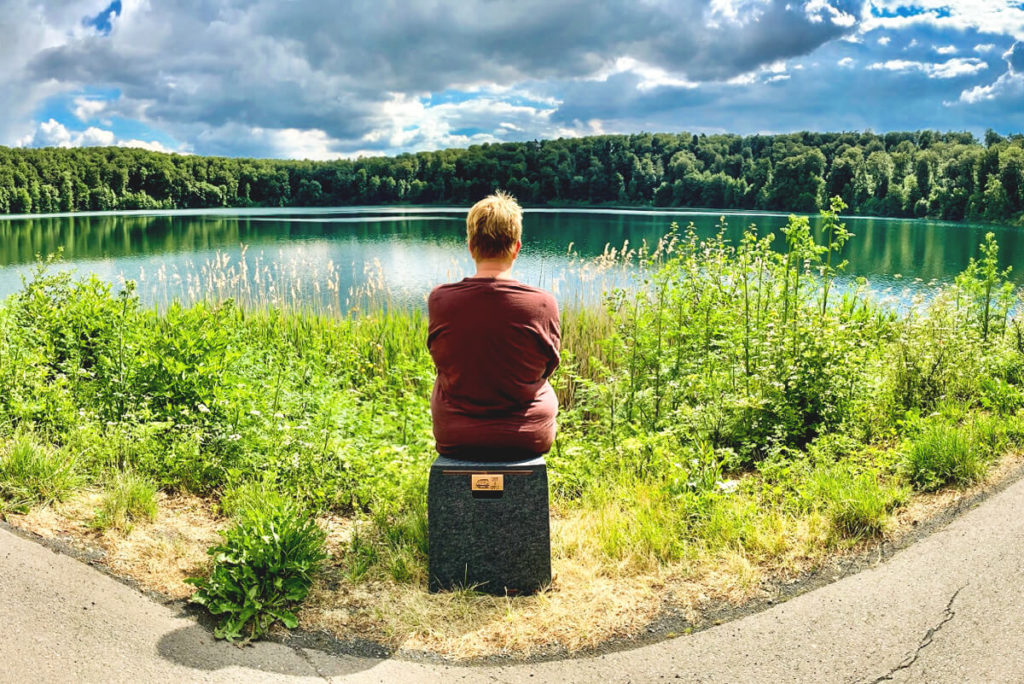
You can actually stop at any of the numerous hiking parking lots and let yourself go. The Eifel is not very densely populated. Take the municipality of Dahlem, for example. It has the lowest population density of all municipalities in the Eifel: 44 inhabitants per square kilometer. The nearest motorway is 15 kilometers away, but the town does have a train station. Dahlem, by the way, is located in North Rhine-Westphalia, Germany’s most populous state – an average of 525 people live there per square kilometer.
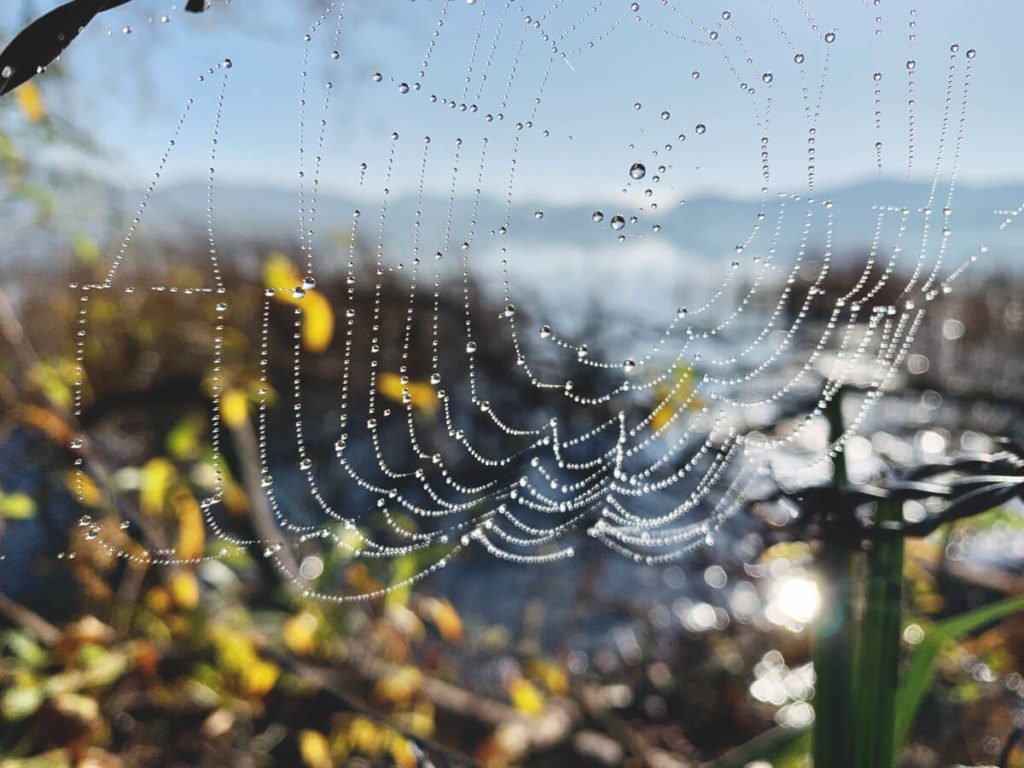
Peace and quiet in the Eifel region means the absence of civilized noise. For city-strained ears, the silence is initially unusual. You still hear plenty, but the sources of noise are so different: the rustling of leaves beneath your feet, the birdsong, the babbling of streams and rivers. And every now and then, a little shock: wildlife suddenly confronting you, staring boredly at you while your heart races. Roe deer are incredibly large!
2. You’re interested in geotourism?
Admit it: the headline “Geysers, Volcanic Craters, and Lava Bombs” somehow appealed to you. Understandably! After all, these are all natural phenomena that we actually know from other geographical contexts. Who would have thought that we could learn as much about volcanology in Germany as we do in the Eifel? And I don’t even mean that you have to visit one of the fabulously well-organized information centers (such as the Lava Dome in Mendig or the Volcano Park Information Center in Plaidt). No, it’s enough that you stumble across basalt columns on a hike or suddenly find yourself standing at the edge of a quarry in front of the petrified diary of the last volcanic eruption.
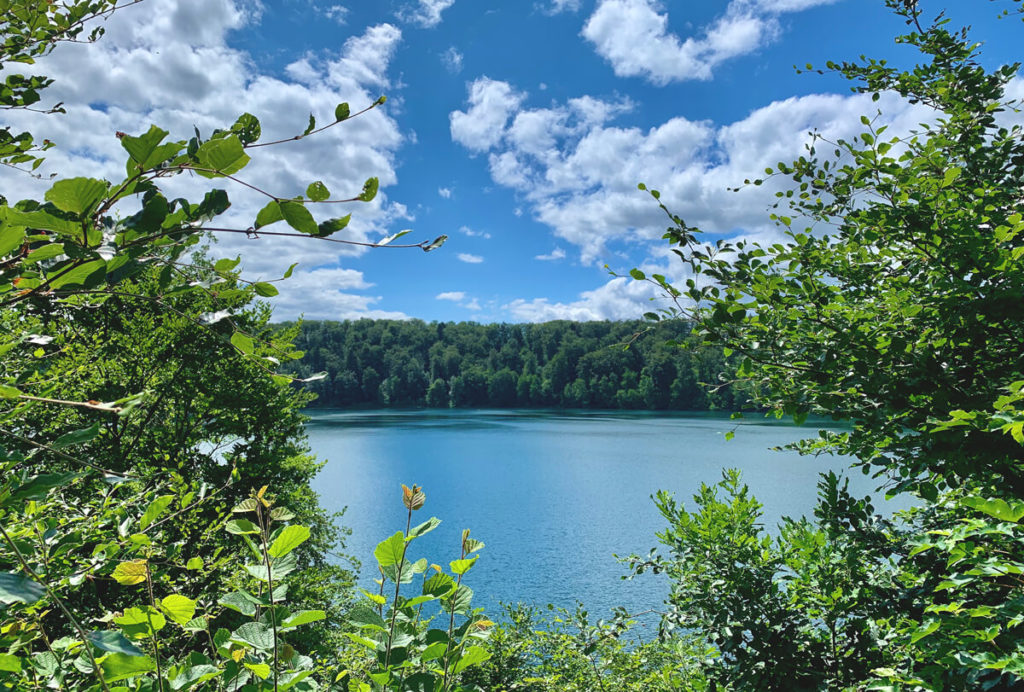
For example, at the Wingertsberg wall, which looks like a sliced layer cake and, with its different layers of ash, depicts the exact story of the dramatic last eruption of the Laacher See volcanic complex approximately 12,000 years ago. Volcanologists from all over the world make pilgrimages here to study the clearly recognizable individual phases of the volcanic eruption based on the density and color of the material in the exposed flank of the Wingertsberg. Nowhere else in the world can you get so close and safely to the layers of a large pumice eruption in the immediate vicinity of the former crater.
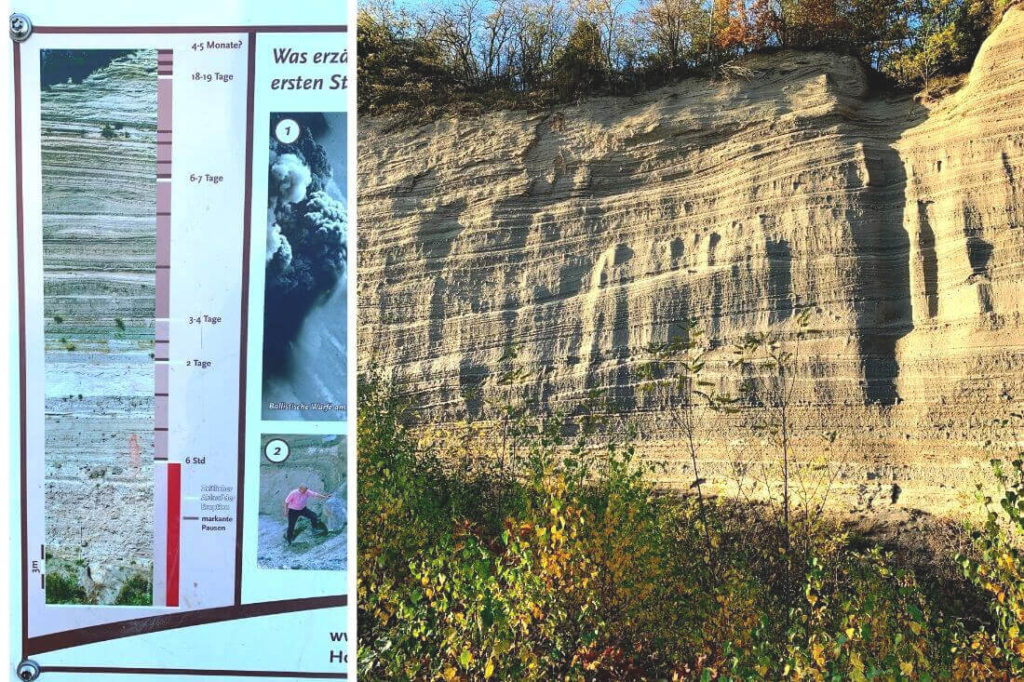
3. You want to be a damsel or knight
Germany is a land of castles: In almost every region you can find witnesses to medieval architecture, and with over 140 castles, the Eifel is considered one of the most castle-rich regions in the country. Probably the most famous castle in the Eifel is Eltz Castle. It’s beautiful, dates back to the 12th century, and sits atop a 70-meter-high rocky outcrop between wooded hills above the valley with the Eltz River of the same name. And here’s a recommendation for you: the castle is great, but the surrounding nature is just as amazing!
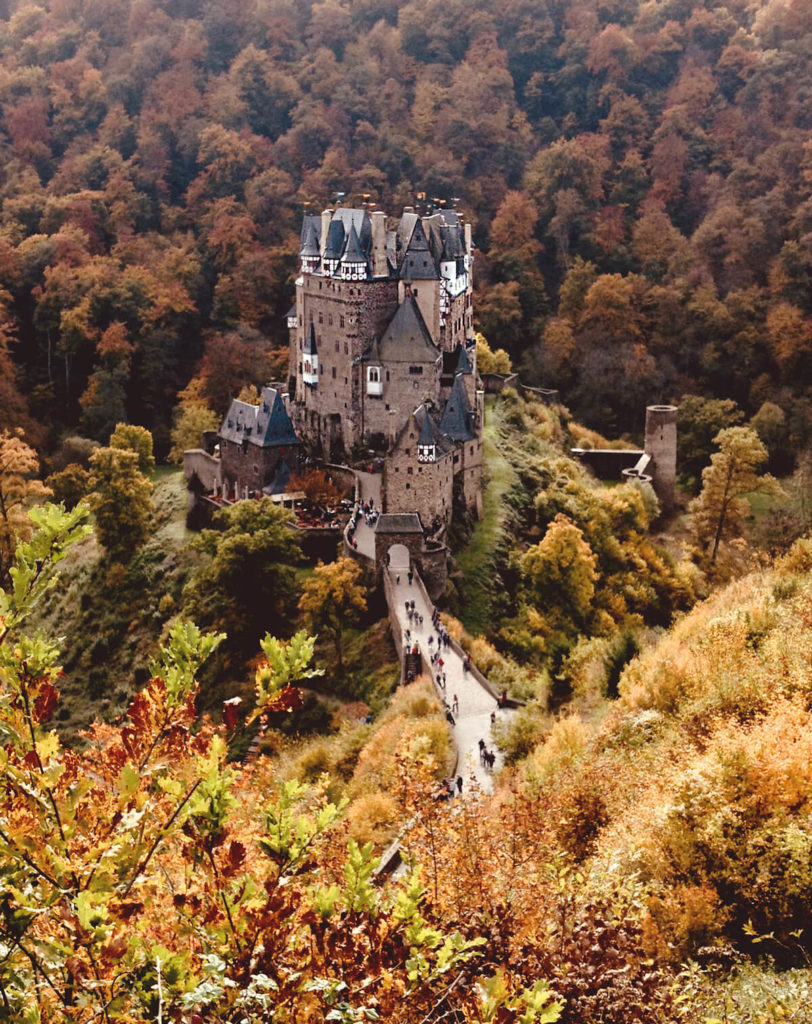
It’s definitely worth combining a visit to the castle with a hike on the “Eltzer Burgpanorama” dream trail (12.6 km), for example. If that’s too far for you, park in the Ringelsteiner Mühle parking lot in the town of Moselkern and walk the “secret path” through the Elz Valley to the castle. A great alternative to the often overcrowded castle parking lot! And pssst… it doesn’t always have to be the Instagram hotspot. The other castles, ruins, or palaces are just as worth seeing!
4. You want to lace up your hiking boots
Whether you’re a beginner or a seasoned hiker, the Eifel offers just the right activity for every type of hiker. Impressive natural landscapes such as the beech and oak primeval forest in the Eifel National Park, the raised bogs of the Hohes Venn Nature Park, the mighty reservoirs in the North Rhine-Westphalia Eifel, the maars in the Vulkaneifel Nature and Geopark, the fertile Bitburger Gutland with its orchards, and so on… The most famous hiking trail is perhaps the Eifelsteig – a premium hiking trail with a total length of 313 km. I’ve hiked about 180 kilometers of this trail myself so far, and I’m absolutely thrilled!
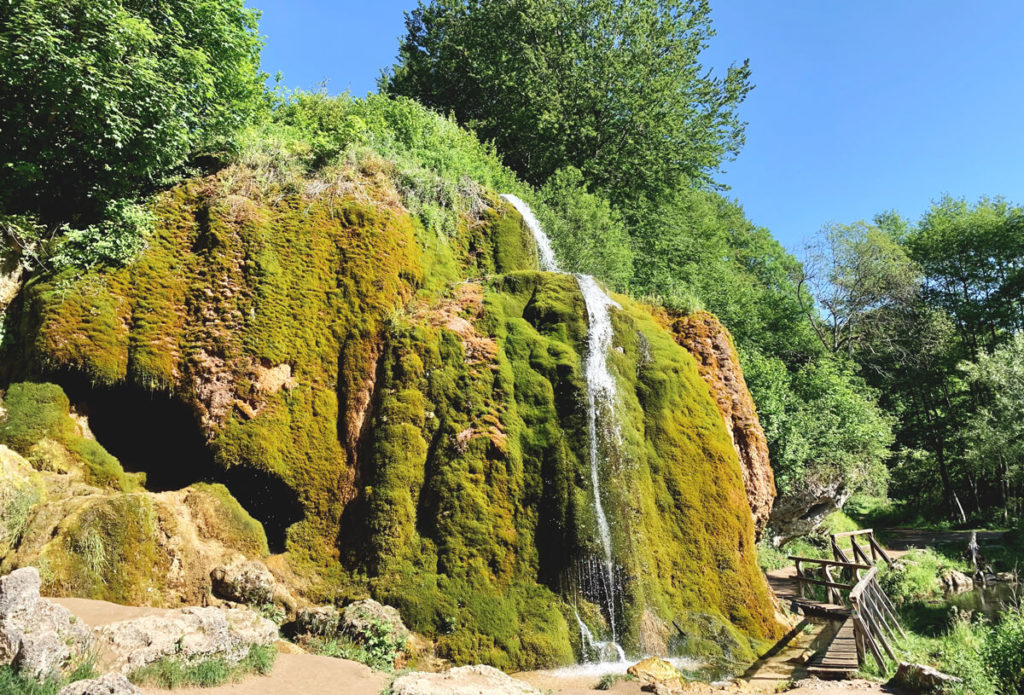
Under the motto “Where rock and water accompany you,” 15 day stages between Aachen-Kornelimünster in North Rhine-Westphalia and Trier in Rhineland-Palatinate offer a diverse journey of discovery through the unique landscapes of the Eifel. Hiking in long-distance trails is certainly not easy, so I had a package put together with overnight accommodation and luggage transport, and “just” had to walk. Hahaha… I found it quite challenging to hike 9 stages of about 20 km each in a row! For those who don’t have much time, or would rather return to where they started, we recommend the “Dream Paths” or the “Dream Paths.”
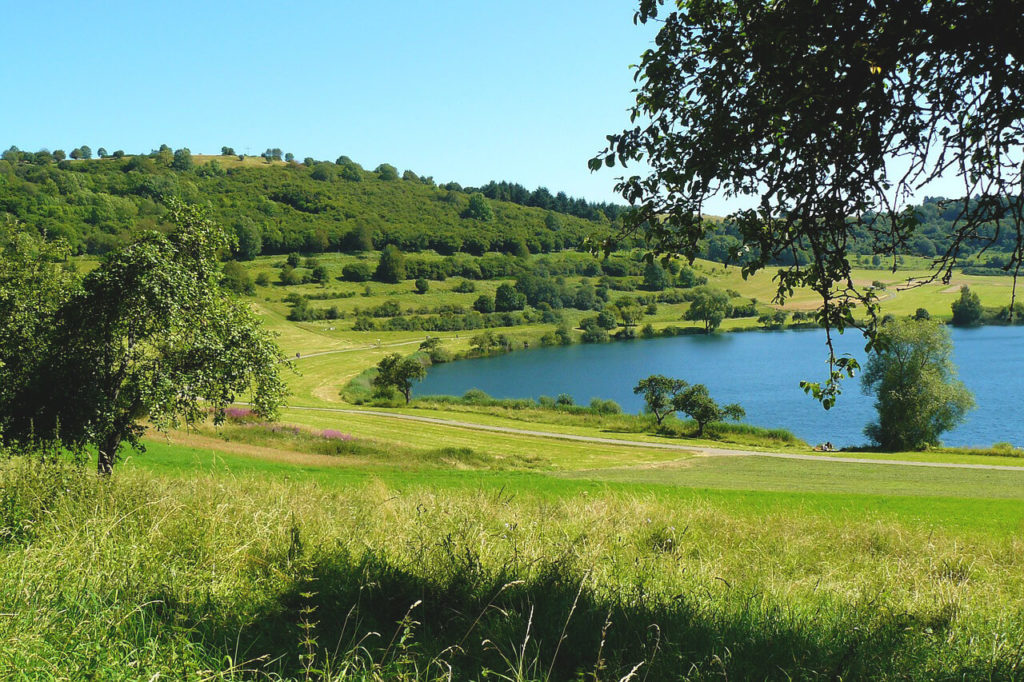
Unique routes will take you to the—truly—most beautiful places the Eifel has to offer. I already told you about the “Eltzer Burgpanorama” dream trail above. The “Monrealer Ritterschlag” or the “Höhlen- und Schluchtensteig Kell” are great day adventures for which you should have a certain level of fitness and surefootedness. If you want to pack your daypack immediately after reading my descriptions, please check the hiking direction for the circular trails, which is important during the pandemic, so you don’t encounter people unnecessarily and get too close to each other in some very narrow passages.
5. You like cute places and the special
Eifel villages have a very special charm. The church in the middle of the village, the market square in front of it, and all around, houses and farmsteads, mostly half-timbered, some of them protected from the cold winter winds by high hedges – typical Eifel. There are also many rustic places to stop for hungry or thirsty hikers, bikers, or horseback riders. You might even be offered a foot bath with homemade cake or tie up your bike next to the horse parking lot. The Eifel never ceases to amaze! Go there and have your own unique experiences!
Popular places in the Eifel: Monschau, Monreal, Aachen, Bürresheim Castle, Bad Münstereifel, Stolberg, Gerolstein, and Hillesheim.
